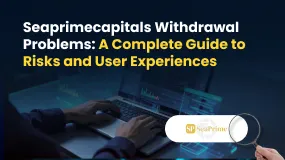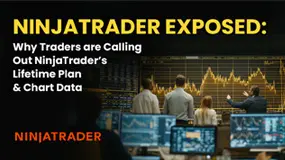简体中文
繁體中文
English
Pусский
日本語
ภาษาไทย
Tiếng Việt
Bahasa Indonesia
Español
हिन्दी
Filippiiniläinen
Français
Deutsch
Português
Türkçe
한국어
العربية
What Is Forex Trading Margin? How to Calculate It?
Abstract:Forex trading beginners could often come across the term ”margin” when involving in forex trading.

Maybe it is a completely new concept to you. Either way, it is a very important topic that you will need to master in order to become a successful Forex trader.
Margin and leverage are among the most important concepts to understand when trading forex. In this article, we will go into more detail about exactly what the margin is, how margin trading within forex works, and some things you should look out for.
What Is Margin in Forex Trading
Margin in trading is the deposit required to open and maintain a position. When trading on margin, you will get full market exposure by putting up just a fraction of a trades full value. So margin is not a cost or a fee, but it is a portion of the customer's account balance that is set aside in order trade. Investors use margin trading in forex to increase possible return on investment.
A margin account, at its core, involves borrowing to increase the size of a position and is usually an attempt to improve returns from investing or trading. Using a ‘margin account’, an investor will use their own funds to put forward a percentage of a larger value investment, with the broker putting forward the rest.
Margin and leverage
Margin and leverage are two sides of the same coin. Margin is the minimum amount of money required to place a leveraged trade, while leverage provides traders with greater exposure to markets without having to fund the full amount of the trade.
The margin required by your FX broker will determine the maximum leverage you can use in your trading account. Therefore, trading with leverage is also sometimes referred to as “trading on margin”. For example, A minimum margin requirement of 0.5% is the same as 200:1 leverage. A leverage ratio of 100:1 would be 1%.
Example of buying on margin
Let's say a broker offers leverage of 1:50 for Forex trading. This means that for every 50 units of currency in an open position, 1 unit of the currency is required as the margin. In other words, if the size of your desired Forex position was $50, the margin would be $1.
Further, let‘s say EUR/USD is trading at $1.1128, with a buy price of 1.11284 and a sell price of 1.11276. You think that the euro is set to gain value against the dollar, so you decide to buy a single lot to the value of €100,000. With the trading margin, you don’t have to put down the full amount of the trade. In this case, you only have to commit €2000 as margin.
What Is A Margin Call
A margin call is what happens when a trader no longer has any usable/free margin. In other words, the account needs more funding. This tends to happen when trading losses reduce the usable margin below an acceptable level determined by the broker. The point where your broker initiates a margin call is called the margin call level.
You have to know the two kinds of margin firstly:
Initial margin
The initial margin is the minimum amount youll need to put up to open a position. It is sometimes called the deposit margin, or just the deposit.
Maintenance margin
The maintenance margin, also known as variation margin, is additional funds that may be required from you if your position moves against you. Its purpose is to ensure you have enough money in your account to fund the present value of the position at all times – covering any running losses.
The maintenance margin is the required percentage of the total investment that is less than the initial margin, and which the investor must maintain in their trading account in order to avoid a margin call.
Once the investors account has fallen below the required maintenance margin level, the broker will send a margin call to the investor to notify him that he must put more cash into the account to make up for the difference between the current price and the maintenance margin requirement.
Pros And Cons of Margin in Forex Trading
Margin trading can open great possibilities for you as a forex trader to engage in markets to a much higher level than you could with just your own funds. Buying on margin means that you have the potential to spread your capital even further, as you can diversify your positions over a wider array of markets. Beyond this, margin trading means you can always be in a position to make a move in the forex market if you spot an opportunity.
It is well worth remembering though, that as the largest trading market in the world by volume, the forex market can move incredibly fast. Therefore, although margin can magnify profits, it can also amplify losses if the market moves against you. This is because your loss is calculated from the full value of the position, not your deposit, and it is possible to lose more than your initial deposit on a trade. The very best advice you can heed is to take the opportunity that a margin presents, but remain mindful and have a strong risk management strategy in place.

Disclaimer:
The views in this article only represent the author's personal views, and do not constitute investment advice on this platform. This platform does not guarantee the accuracy, completeness and timeliness of the information in the article, and will not be liable for any loss caused by the use of or reliance on the information in the article.
Read more

Seaprimecapitals Withdrawal Problems: A Complete Guide to Risks and User Experiences
Worries about Seaprimecapitals withdrawal problems and possible Seaprimecapitals withdrawal delay are important for any trader. Being able to get your money quickly and reliably is the foundation of trust between a trader and their broker. When questions come up about this basic process, it's important to look into what's causing them. This guide will tackle these concerns head-on, giving you a clear, fact-based look at Seaprimecapitals' withdrawal processes, user experiences, and trading conditions. Most importantly, we'll connect these real-world issues to the single most important factor behind them: whether the broker is properly regulated. Understanding this connection is key to figuring out the real risk to your capital and making a smart decision.

iFX Brokers Review: Do Traders Face Withdrawal Issues, Deposit Credit Failures & Free Coupon Mess?
Have you had to pay several fees at iFX Brokers? Had your trading profit been transferred to a scamming website, causing you losses? Failed to receive withdrawals from your iFX Brokers trading account? Has your deposit failed to reflect in your trading account? Got deceived in the name of a free coupon? Did the broker officials not help you in resolving your queries? Your problems resonate with many of your fellow traders at iFX Brokers. In this iFX Brokers review article, we have explained these problems and attached traders’ screenshots. Read on!

NinjaTrader Exposed: Why Traders are Calling Out NinjaTrader’s Lifetime Plan & Chart Data
Did NinjaTrader onboard you in the name of the Lifetime Plan, but its ordinary customer service left you in a poor trading state? Do you witness price chart-related discrepancies on the NinjaTrader app? Did you have to go through numerous identity and address proof checks for account approval? These problems occupy much of the NinjaTrader review online. In this article, we have discussed these through complaint screenshots. Take a look!

Questrade Review Pros, Cons and Regulation
Is Questrade legit? Yes—CIRO regulated broker offering stocks, ETFs, forex, CFDs, bonds, and more with low fees and modern platforms.
WikiFX Broker
Latest News
Axi Review: A Data-Driven Analysis for Experienced Traders
INZO Regulation and Risk Assessment: A Data-Driven Analysis for Traders
Pepperstone CEO: “Taking Down Scam Sites Almost Every Day” Becomes “Depressing Daily Business”
The CMIA Capital Partners Scam That Cost a Remisier Almost Half a Million
Is Seaprimecapitals Regulated? A Complete Look at Its Safety and How It Works
eToro Cash ISA Launch Shakes UK Savings Market
Cleveland Fed's Hammack supports keeping rates around current 'barely restrictive' level
Delayed September report shows U.S. added 119,000 jobs, more than expected; unemployment rate at 4.4%
Close Up With WikiFX —— Take A Close Look At Amillex
GGCC Bonus and Promotions: A Data-Driven Analysis for Experienced Traders
Currency Calculator



